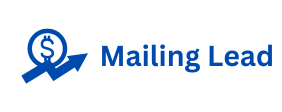Sales stages: classic techniques Many people believe that selling something is an art that is only available to a select few. But success in sales most often depends not on innate talent, but on a well-structured process.
In this article, we talk about the key stages of sales. We will talk about modern methods and techniques that will help attract the client’s attention, successfully complete the deal and avoid typical mistakes.
Sales Technique: What is it?
Sales technique is a detailed plan on the basis of which sellers build their communication with clients. The manager’s task is to interest the buyer, who may not initially plan to buy. During the negotiations, the client can change his views on the product and assess how profitable it will be for him to buy a particular product.
Five stages of sales: classic technique
In the classic sales scheme, there are five main stages:
These five steps form a sequential process, where each stage naturally flows into the next. It is very important not to change this sequence, so as not to disrupt the entire sales scheme.
For example, if a salesperson does not identify the client’s needs, the product may not interest the buyer, and the presentation of the product will never take place.
Let’s look at each stage in more detail:
Step 1. Establishing contact with the client
The first stage is establishing contact with the buyer. The manager’s goal is to prepare the ground for further communication. To do this, you need to interest the person.
Imagine a situation: a stranger approaches you on the street with an offer. First you want to understand who he is, and only then find out what he is offering.
Our all data is double opt-in and permission basis. When buying job function email database for your target audience, it is important to choose a data provider that gives you job function email database access to real data. The best place to buy our data is to get more marketing benefits. Latest Mailing Database always provides Accurate and fresh data. We will provide you with 100% accurate valid data.
The same goes for sales. At the first contact, the manager should state his name and immediately indicate what company he represents and what he sells. This will make it easier to build trusting relationships.
Step 2. Identifying customer needs
If you have established contact, you can move on. At the second stage of sales, you need to identify needs. The difficulty here is that the client rarely comes with a clear understanding of what he needs.
Here it is important to understand whether the offered product or service is really needed by the client, and why he might want to buy it. To do this, you need to find a common language with the buyer and identify his pain points.
Stage 3. Product presentation
After the manager has learned about the client’s needs and preferences, he is ready to present his offer. Here the main task is not just to show the product, but to explain what benefit it will bring and how it will solve specific problems of the person.
If the item being sold is a business project management program, the manager can emphasize its functionality:
Stage 4. Working with objections
Even after a convincing presentation, the buyer may still have doubts. Perhaps he did not plan to buy the product right now or is afraid of making an ill-considered purchase. The seller’s task at this stage is to correctly handle objections to help the client overcome doubts and confidently make a purchase decision.
Step 5. Closing the deal
At the last stage of the conversation, the specialist encourages the client to make a purchase. Here it is important to ask simple but effective questions new year marketing: the best holiday advertising techniques that allow the person to easily answer “yes” or “no”. At the same time, try to act carefully, avoid direct pressure. Do not directly ask the client “will you buy?”
Examples of competent questions at the stage of closing a deal :
- “Let’s arrange delivery at a time convenient for you?”
- “Are there any other points we could discuss before we sign the contract? If not, I suggest we go to the checkout.”
- “Can I place your order right now?”
Tip: Highlight additional benefits of working with your company. For example, you could say:
- “I will save your contact information and you can always contact me with any questions after your purchase.”
- “We offer expedited shipping service so you can receive your goods tomorrow.”
Three techniques to increase sales
You don’t have to limit yourself to just the basic stages of selling. There are many additional methods that can work even better than the classic ones.
Let’s look at the most popular sales techniques:
Cross-selling
This simple method motivates customers to purchase additional products along with their main selection. The idea behind cross-selling is to offer the customer products that complement their purchase.
Examples of effective cross-selling:
- Subscription to online yoga or fitness courses when purchasing a fitness bracelet.
- Fish and plant care kit included with purchase of aquarium.
- Collectible figures of characters on video game sites.
Increasing the average check (Up-sell)
Offering customers a more expensive and high-quality product instead of a budget alternative is also an effective way to increase conversion. The main thing is that such products exceed customer expectations in terms of quality and functionality.
How can this method be applied:
- Offer a car with a fairly powerful engine and an extended range of options to those who are considering the standard configuration.
- Instead of a regular ticket to an event, offer a VIP option with better seats and exclusive service.
- Instead of a standard subscription, offer a version with more extensive functionality.
Down-sell
Down-selling helps to retain a customer who refuses to buy because of the high price. Instead of losing a customer, offer a product with similar features, but at a lower price.
Examples:
- A basic fitness tracker model instead of an advanced device with many features for those who are just starting to exercise.
- Standard Internet service package instead of extended one, if the user does not need a large number of additional options.
- Ready-made website templates instead of custom design for startups or small businesses that need to quickly and inexpensively launch their online project.
Modern sales techniques
Now that we have covered the classic stages of sales and additional techniques, it is time to talk about modern sales techniques. More and more companies are using these strategies to successfully close deals.
This is a classic sales funnel model that helps to consistently guide the client along the path from interest to the final action – purchase.
Let’s look at each stage of this model in more detail:
Attention : the task at this stage is to attract the attention of a potential buyer. This is usually done through advertising.
SNAP technique
This is a flexible sales strategy. It is effective in a highly competitive industry. Let’s see how it works:
Simplicity : Present information concisely and clearly. Customers appreciate it when complex things are explained in simple language.
Uniqueness : Highlight what makes your product different from your competitors.
Attention to detail : Respond to customer needs, understand their requests and potential difficulties.
Value : Convincingly demonstrate the value of your product. The customer should be able to see the benefits they will receive by making a purchase.
SPIN Selling
The SPIN selling technique helps salespeople work effectively phone number it with customers, especially when it comes to selling expensive products. It involves four types of questions aimed at leading the customer to the purchase.
Let’s look at each type of question using the example of purchasing a CRM system:
Situational questions: help to obtain information about the client’s current situation.
“What tools or systems do you use to manage your business?”
Problematic questions: aimed at identifying difficulties that the client may encounter.
Common mistakes of sales managers
We have compiled a checklist of common mistakes made by salespeople that can reduce sales efficiency, regardless of the technology used:
- Ignore the opinion of customers: the most important skill of a salesperson is the ability to listen and hear. Managers who actively respond to the needs of the client have a better chance of closing the deal.




